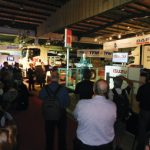A great new gateway
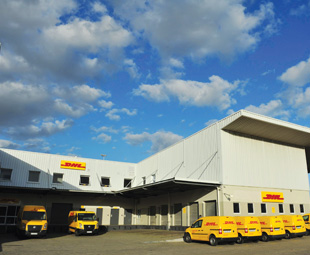
Time is of the essence for all logistics activities, especially when it comes to airfreight … And no one knows this better than DHL, a company that has taken speedy service to heart. But there is always room for improvement as it has demonstrated with its new gateway facility. JACO DE KLERK reports
In order to cater for a growing local and global customer base, DHL Express South Africa (SA), a major player in the logistics industry, has opened a new gateway facility – a fixed base for cargo and freight handling – at Cape Town International Airport.
Norman George, DHL Express SA’s operations director, explains why: “We fly our consignments to and from countries all over the world, so it is important that we have airside access and facilities in both Johannesburg and Cape Town.”
He adds: “At the Johannesburg gateway the airfreight section is over 40 years old, and we have space constraints. So we needed to open another facility into which we could move all the Western Cape freight directly.” He says that, previously, this freight came into Johannesburg, and was then moved from there to the Mother City.
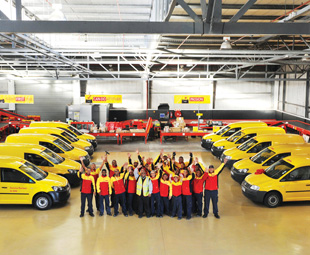 “With more international flights going into and out of Cape Town International Airport, we had the opportunity to have a bigger facility there,” George notes. “Having this facility also speeds up the process and gets shipments to and from our customers a lot faster.”
“With more international flights going into and out of Cape Town International Airport, we had the opportunity to have a bigger facility there,” George notes. “Having this facility also speeds up the process and gets shipments to and from our customers a lot faster.”
Furthermore, the new gateway facility offers DHL some backup – if, for example, an aircraft can’t land in Johannesburg, the company can then divert it to Cape Town. “We are also negotiating within the DHL world to start routing all of our Eastern Cape material which is currently flown into Johannesburg – through the new facility as well.”
This will relieve the pressure in Johannesburg even more … But, this is still open for debate.
Hennie Heymans, MD of DHL Express SA, explains that the new gateway facility (which is over 1 900 m2) replaces the company’s Maitland station (which was about 720 m2) – effectively more than doubling its Western Cape processing capabilities.
George explains that the company has both inbound and outbound processes. “Everything that comes into the country will be offloaded from the aircraft and brought directly to our facility at the airport.” This allows DHL to have total control of its consignments, from the minute they come off the aircraft right up to the time that the company delivers the goods.
“Every other company’s freight would go to the cargo shed belonging to the airline,” notes George. “Being at the airport helps speed up the process, as we are able to clear everything at our facility.” He adds that DHL’s competitors would have to go to the airline shed, clear the goods and then move them to their own facilities.
George explains the benefits of this speedy process: “Previously we could sort approximately 200 shipments per hour at the old facility, but we’ve now increased it to around 500. However, the new facility has a total capacity of up to 1 000 shipments per hour.” But, this isn’t only due to the gateway’s convenient location.
Heymans explains: “The manual processes have been replaced with semi-automated processes, which minimises the lead time for the flow of material to and from the airline and our clients.”
George reveals that this semi-automated process is achieved through the use of conveyor belts: “Previously people had to offload freight outside the facility and move it by trolley into the warehouse where the trolleys were unloaded – so there was a lot of handling involved. But we’ve now reduced the handling quite significantly.”
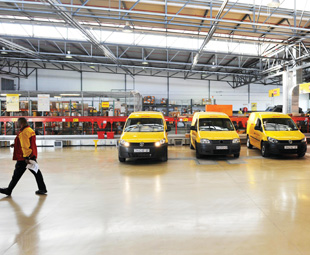 He continues: “The cargo now comes out of the vehicle onto a conveyor belt, which then moves through a re-weigh machine – where we get the actual dimensions and weight of the shipment. After that, we put it through an X-ray machine for security purposes and then it goes into the container. This has reduced double handling and makes for quicker on- and off-loading.”
He continues: “The cargo now comes out of the vehicle onto a conveyor belt, which then moves through a re-weigh machine – where we get the actual dimensions and weight of the shipment. After that, we put it through an X-ray machine for security purposes and then it goes into the container. This has reduced double handling and makes for quicker on- and off-loading.”
George says the conveyor belts have sped up DHL’s processing time quite significantly: “We are able to push material through the new facility in half the time that we were able to do previously. We can now also get a consignment onto the road or into the facility far more quickly than before.”
He adds that previously all the vehicles had to be back at the office by 16:00 because there were a lot of manual processes to go through. “This included the sorting, packing, stacking and bagging of goods. But, with the new facility, they can now be back at 17:30. We merely have to reverse the vehicles up onto the belt, push the collected cargo down the conveyor, which sends it through the X-ray machine, into a container and out to the aircraft.” So the company saves more than an hour, which translates into more deliveries per day.
But the time savings don’t end there … Craig Geysman, operations supervisor at the Cape Town gateway, explains: “One of the biggest benefits of the new facility is that everything is under one roof; the service centre and the gateway. We don’t have to wait for a truck to bring our freight from the gateway to the service centre anymore, because it is all on site.”
In the past delays were sometimes caused by external factors. “When we were still in Maitland typical examples were accidents, road blockages and traffic jams – which meant that we had to wait longer for those goods to come through,” notes Geysman. “But these issues are no longer relevant as we are all under one roof.”
He continues: “Another plus that we have is the clearance of goods, by our own staff, on arrival at the facility. So as the freight comes in, our employees in imports start clearing paperwork and the shipment. After it has been cleared, it moves directly from the facility’s gateway side into the service centre.”
Geysman adds that, at the Maitland station, the service centre couldn’t do same-day deliveries if it received the freight after 12:30. “But because everything is in the same building now, we can get a consignment just before 13:00 and have it ready for delivery just after 13:00 on that same day.”
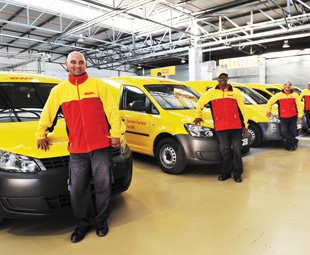 Another benefit of the unification of the gateway and service centre is that DHL can now do cross-functional training with the two different departments. “The service centre staff learn about what happens at the gateway and the gateway people in turn learn about what the service centre does,” says Geysman.
Another benefit of the unification of the gateway and service centre is that DHL can now do cross-functional training with the two different departments. “The service centre staff learn about what happens at the gateway and the gateway people in turn learn about what the service centre does,” says Geysman.
“So it is all intertwined and we all work hand-in-hand,” he relates with a smile. “It is definitely about teamwork here and, because of the cross-functional training, if we are short staffed in a department, we have people who can sort out whatever gets handed to them – regardless of the department that they are in.”
George adds: “DHL is extremely proud of this new state-of-the-art facility. The new gateway has also improved our processing time significantly.”
Heymans says that this investment represents a trend in local business, as the province has seen increased interest from global brands that use the Western Cape as a gateway into South Africa and sub-Saharan Africa. For example, Chinese consumer electronics giant, Hisense, recently opened a manufacturing hub in Atlantis, covering a total area of 100 000 m² and creating up to 3 000 jobs in its own business and related industries.
“Like Hisense, we believe in the economic and trading power of South Africa, and see the Western Cape as a key area of investment. We will continue to grow and improve our infrastructure and services in the region,” comments Heymans.
“The emergence of technology and e-commerce, driven by consumers using the internet to conduct business, is increasingly requiring a higher volume of same-day transport of goods,” he points out. “Leaders in logistics have a key role to play in this space and need to continually look for ways to streamline the ease of transporting goods within South Africa and across its borders, thereby ultimately ensuring piece of mind for those individuals or companies using these services.”
Published by
Focus on Transport
focusmagsa

